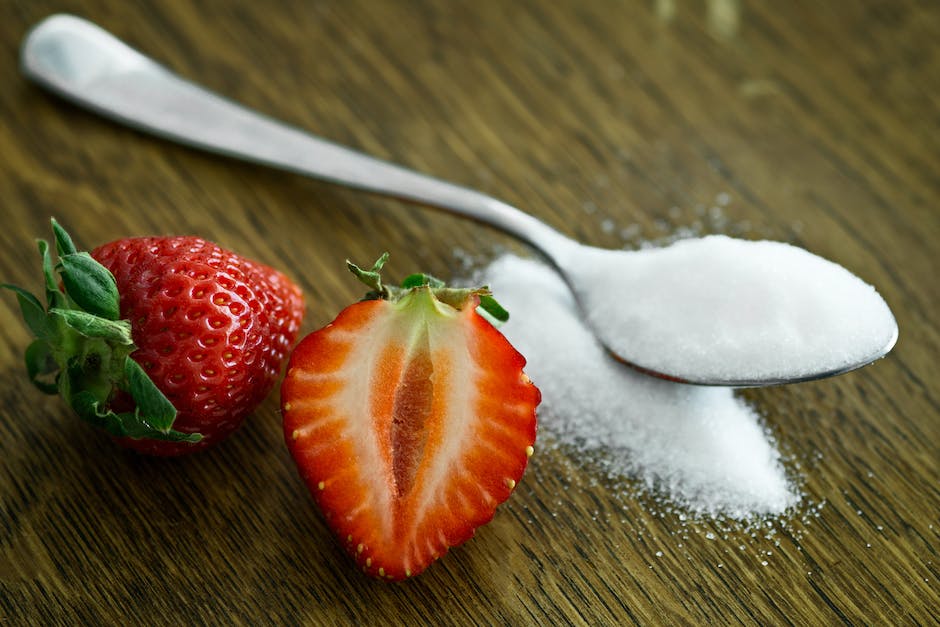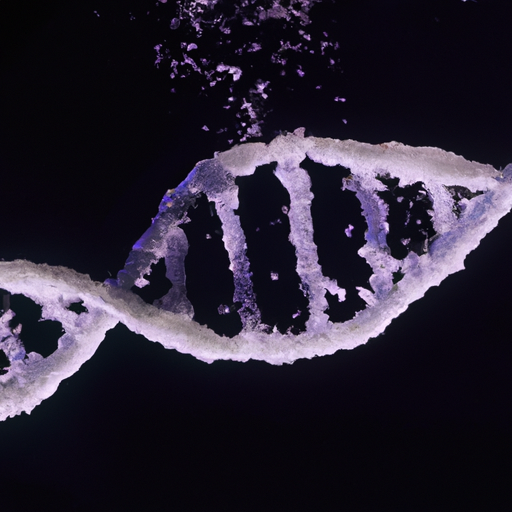
-
Table of Contents
- What Are the Potential Risks of Too Much Sugar in DNA?
- How Does Sugar Affect the Function of DNA?
- What Are the Benefits of Sugar in DNA?
- How Does Sugar Affect the Stability of DNA?
- What Is the Role of Sugar in DNA Replication?
- What Are the Different Types of Sugars Found in DNA?
- How Does Sugar Play a Role in DNA Structure?
Sweetening the Code of Life: Sugar in DNA
What Sugar Is Found In DNA; Sugar is an essential component of DNA, the genetic material that makes up all living organisms. It is a type of carbohydrate, specifically a monosaccharide, and is composed of carbon, hydrogen, and oxygen atoms. The sugar found in DNA is called deoxyribose, and it is a five-carbon sugar. Deoxyribose is the backbone of the DNA molecule, and it is what holds the nitrogenous bases together. The nitrogenous bases are the genetic code that determines the characteristics of an organism. Without sugar, DNA would not be able to function properly.
What Are the Potential Risks of Too Much Sugar in DNA?
Too much sugar in DNA can have a number of potential risks. Excess sugar can cause DNA to become unstable, leading to mutations and other genetic changes. This can lead to a variety of health problems, including cancer, diabetes, and heart disease.
Excess sugar can also interfere with the way DNA is read and copied, which can lead to errors in the genetic code. This can cause cells to malfunction and can lead to a variety of diseases.
In addition, too much sugar can cause DNA to become damaged, leading to mutations and other genetic changes. This can lead to a variety of health problems, including cancer, diabetes, and heart disease.
Finally, too much sugar can lead to oxidative stress, which can damage DNA and lead to a variety of health problems. Oxidative stress can also lead to inflammation, which can further damage DNA and lead to a variety of health problems.
Overall, it is important to limit your intake of sugar to avoid the potential risks associated with too much sugar in DNA. Eating a balanced diet and limiting your intake of sugary foods and drinks can help you maintain a healthy level of sugar in your DNA.
How Does Sugar Affect the Function of DNA?
Sugar plays an important role in the function of DNA. DNA is a molecule that contains genetic information and is responsible for the development and functioning of all living organisms. Sugar is essential for the proper functioning of DNA because it helps stabilize the structure of the molecule.
Sugar molecules bind to the phosphate groups of the DNA backbone, forming hydrogen bonds that help to stabilize the structure of the molecule. This helps to keep the DNA strands from becoming tangled or damaged. Sugar also helps to protect the DNA from environmental damage, such as UV radiation or oxidation.
In addition, sugar is essential for the replication of DNA. During the process of replication, the two strands of DNA must be separated so that new strands can be created. Sugar helps to facilitate this process by providing energy for the enzymes that are responsible for unwinding the strands.
Finally, sugar is also important for the transcription of DNA. During transcription, the genetic information contained in the DNA is copied into a messenger RNA molecule. Sugar helps to provide energy for the enzymes that are responsible for this process.
In summary, sugar plays an important role in the function of DNA. It helps to stabilize the structure of the molecule, protect it from environmental damage, facilitate the process of replication, and provide energy for the transcription of genetic information. Without sugar, DNA would not be able to function properly.
What Are the Benefits of Sugar in DNA?
Sugar plays an important role in DNA, the molecule that carries genetic information. Sugars are essential components of the DNA backbone, and they help stabilize the structure of the molecule. They also play a role in the recognition and binding of DNA by proteins, which is essential for the regulation of gene expression.
The most common sugar found in DNA is deoxyribose, which is a five-carbon sugar. This sugar is linked to the nitrogenous bases that make up the genetic code. The sugar-phosphate backbone of DNA is formed by the covalent bonds between the deoxyribose and the phosphate groups. This backbone provides the structure of the DNA molecule and helps to stabilize it.
Sugars also play a role in the recognition and binding of DNA by proteins. Proteins bind to specific sequences of DNA, and the sugar-phosphate backbone helps to facilitate this binding. The sugar-phosphate backbone also helps to protect the DNA from damage, as it is more resistant to chemical and physical damage than the nitrogenous bases.
Finally, sugars are also involved in the replication of DNA. During replication, the two strands of the DNA molecule are separated, and the sugar-phosphate backbone helps to hold the strands apart. This allows the DNA to be copied accurately and efficiently.
In summary, sugars are essential components of DNA and play an important role in its structure, recognition, and replication. Without sugars, DNA would not be able to function properly and genetic information would not be able to be passed on from one generation to the next.
How Does Sugar Affect the Stability of DNA?

Sugar plays an important role in the stability of DNA. It helps to stabilize the double helix structure of DNA by forming hydrogen bonds between the two strands. This helps to keep the strands together and prevents them from breaking apart.
Sugar also helps to protect DNA from damage caused by environmental factors such as UV radiation and oxidation. It does this by forming a protective layer around the DNA strands, which helps to shield them from damage.
However, too much sugar can have a negative effect on the stability of DNA. High levels of sugar can cause the DNA strands to become too rigid, which can make them more prone to breaking apart. This can lead to mutations and other genetic defects.
In summary, sugar plays an important role in the stability of DNA. It helps to stabilize the double helix structure and protect it from damage. However, too much sugar can have a negative effect and can lead to mutations and other genetic defects.
What Is the Role of Sugar in DNA Replication?
Sugar plays an important role in DNA replication, the process by which cells make copies of their genetic material. During DNA replication, the two strands of the double helix separate and each strand serves as a template for the production of a new strand. The sugar molecules in the DNA strands provide the backbone for the strands, and the phosphate groups link the sugar molecules together.
The sugar molecules also help to stabilize the DNA strands, making them less likely to break apart. During DNA replication, the sugar molecules in the original strands are used as a template for the production of new strands. The sugar molecules in the new strands are linked together in the same way as the original strands, forming a new double helix.
In addition to providing the backbone for the DNA strands, the sugar molecules also help to regulate the speed of DNA replication. The sugar molecules in the DNA strands are arranged in a specific pattern, and this pattern helps to control the rate at which the strands are replicated. If the sugar molecules are arranged in a different pattern, the rate of replication can be affected.
Overall, sugar plays an important role in DNA replication. It provides the backbone for the strands, helps to stabilize them, and helps to regulate the speed of replication. Without sugar, DNA replication would not be possible.
What Are the Different Types of Sugars Found in DNA?
DNA is made up of four different types of sugars: deoxyribose, ribose, 2-deoxy-D-ribose, and 2-deoxy-D-xylose.
Deoxyribose is the most common sugar found in DNA. It is a five-carbon sugar that is composed of a pentose ring structure. It is the backbone of the DNA molecule and is responsible for the double helix structure.
Ribose is the sugar found in RNA. It is similar to deoxyribose, but it has an additional hydroxyl group. This hydroxyl group is responsible for the single-stranded structure of RNA.
2-Deoxy-D-ribose is a modified form of deoxyribose. It is found in some viruses and is responsible for the single-stranded structure of the viral genome.
2-Deoxy-D-xylose is a modified form of deoxyribose. It is found in some bacteria and is responsible for the single-stranded structure of the bacterial genome.
These four types of sugars are essential for the structure and function of DNA and RNA. They are responsible for the stability of the genetic material and are essential for the replication and transcription of genetic information.
How Does Sugar Play a Role in DNA Structure?
Sugar plays an important role in the structure of DNA. DNA is made up of two strands of nucleotides, which are composed of a sugar molecule, a phosphate group, and a nitrogenous base. The sugar molecule in DNA is deoxyribose, which is a five-carbon sugar. The two strands of DNA are held together by hydrogen bonds between the nitrogenous bases. The sugar molecules form the backbone of the DNA strands, and the phosphate groups link the sugar molecules together.
The sugar molecules in DNA are important for the stability of the molecule. The sugar molecules form a double helix structure, which helps to protect the DNA from damage. The sugar molecules also help to regulate the shape of the DNA molecule, which is important for the proper functioning of the molecule.
The sugar molecules in DNA also play a role in the replication of the molecule. During replication, the two strands of DNA separate and new strands are formed. The sugar molecules help to hold the strands together and provide a template for the new strands to form.
In summary, sugar plays an important role in the structure and function of DNA. The sugar molecules form the backbone of the DNA strands, help to regulate the shape of the molecule, and provide a template for replication. Without sugar, DNA would not be able to function properly.In conclusion, sugar is an essential component of DNA. It is found in the form of deoxyribose, which is a five-carbon sugar molecule. Deoxyribose is the backbone of the DNA double helix, and it is responsible for the stability of the structure. Without sugar, DNA would not be able to function properly.
Get More Info
Take control of your health and discover the secrets of your ancestry by embarking on your genetic journey today! Unlock the hidden secrets within your DNA and gain an insight into your unique family history.



